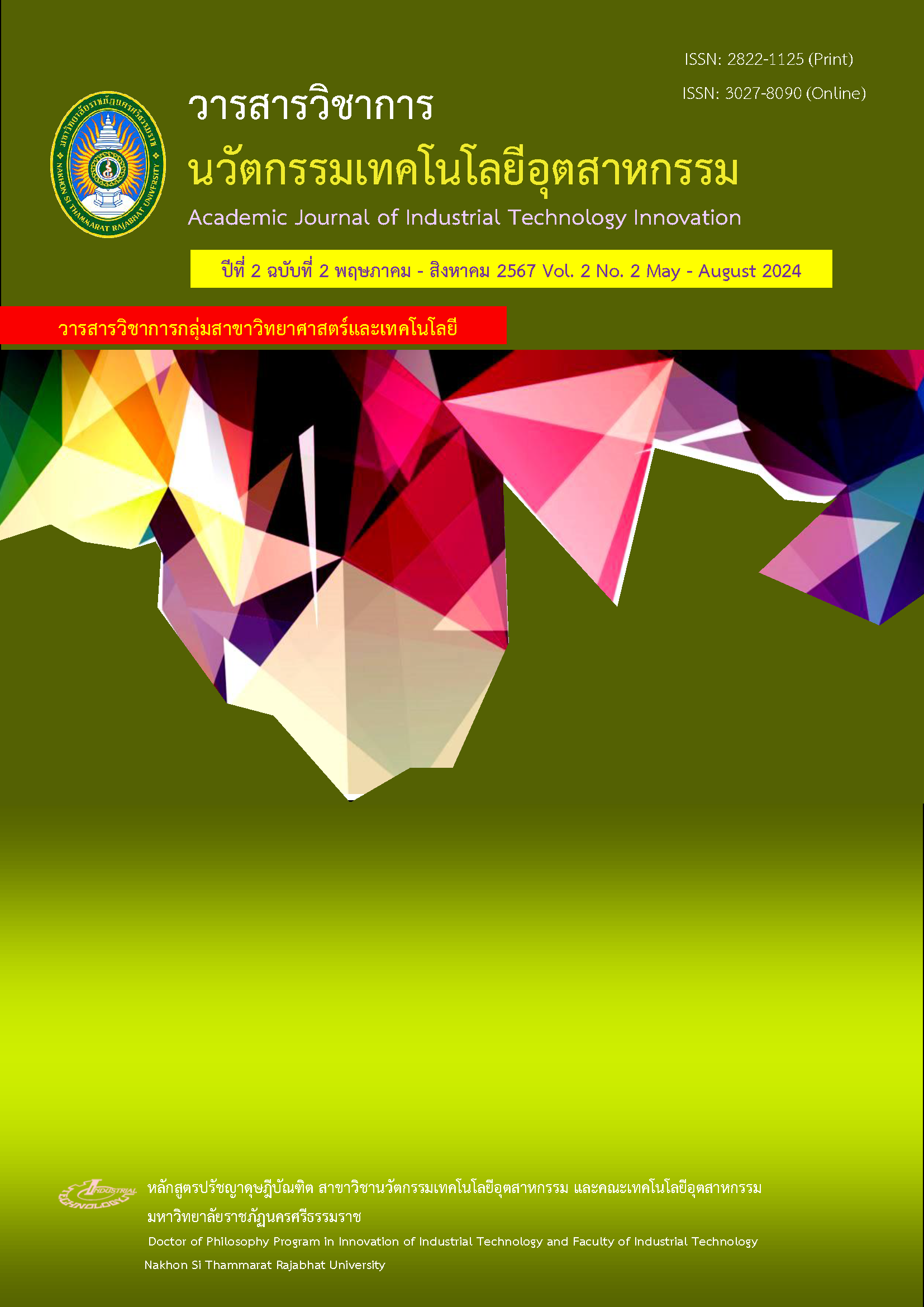Activated Carbon from Cassava Rhizomes to Design Odor Absorbing Products
Main Article Content
Abstract
Objective of this research is to: 1) utilize agricultural waste, specifically cassava rhizome types in the eastern region, 2) study the production process of activated carbon with suitable material properties, and 3) create value-added odor-absorbing products through three different design processes. The research methodology is qualitative, involving laboratory research and development, data analysis, summarization, product prototype testing, and production. The research findings are as follows: 1) Cassava rhizome types, a form of agricultural waste, have potential for value-added applications. 2) The activated carbon production process consists of two steps: charcoal preparation and subsequent stimulation to create micropores. Chemical stimulation is the most effective method, resulting in activated carbon with high porosity and strong odor-absorption capabilities. 3) Odor-absorbing products were developed: car air fresheners containing 60 % activated carbon powder and 40 % plaster, molded into a cactus shape (50x50x80 mm); kitchen deodorizers containing 70 % activated carbon powder and 30 % plaster, molded into a hexagonal shape (150x125x40 mm); and deodorizing soap containing 20 % activated carbon powder and 80 % glycerin soap base, molded into a square shape (50x50x20 mm).
Article Details

This work is licensed under a Creative Commons Attribution-NonCommercial-NoDerivatives 4.0 International License.
Articles published in this journal are copyrighted by the Faculty of Industrial Technology. Nakhon Si Thammarat Rajabhat University
In addition, research results and academic works published in the journal It is the independent opinion of the author. The author is responsible for any legal consequences that may arise from the published article. The editorial team and the journal's production team, we don't always have to agree.
References
Soiklom, S., et al. 2016. “Production of activated carbon from mangosteen peel biomass to remove heavy metals,” Agricultural innovation for a global value chain, Bangkok: Kasetsart University. (in Thai)
Phuangjik, T. 2015. “Activated carbon from bamboo: the market still has high demand,” Journal of Science and Technology (Special Issue). 23(6): pp. 945-954. (in Thai)
Chansiripon C., Kaewpradit P., and Phongyila, P. 2016. “Production of activated carbon from rubber wood charcoal from biomass power plants for water filters,” Research Report. Songkhla, Prince of Songkla University. (in Thai)
Phumphon, P., & Phongthonphruek, S. 2019. “Utilization of durian peels for producing water filters to absorb iron,” Journal of Science and Applied Science. 20(2): pp. 33-44. (in Thai)
Thammee, N., Kegnguan, M. and Mopuang. S. 2012. “Surface properties of activated carbon prepared from stems. Cassava rhizomes and peels,” Naresuan University Journal: Science and Technology. 9(1): pp. 80-90. (in Thai)
Khamdejsak, P. and Yuangchan, S. 2018. “Treatment of mercury contamination in the air with activated carbon,” Environmental Journal Chulalongkorn University. 22(1): pp. 44-52. (in Thai).
Photantimongkol, T. 2017. “Activated carbon from agricultural waste by chemical activation for application to eliminate pollutants in water,” Journal of the Science, Technology and Environment for Learning Research Unit. 8(1): pp. 196-214. (in Thai)
Uparee, O. and Siriwittayapakorn, S. 2016. “Efficiency of activated carbon from bagasse and cassava rhizomes in treating wastewater from silk dyeing,” Industrial Technology Academic Journal: Suan Sunandha Rajabhat University. 4(2): pp. 37-50. (in Thai)


